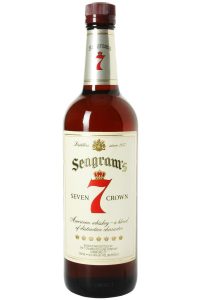Bunker Boys
As you might guess, I frequent a lot of discussions about whiskey both online and in person. One thing that always struck me as old is people who “bunker” large numbers of the same bottle. What is bunkering you ask? It’s when you buy more than one bottle of a given whiskey and store it instead of drinking it. People do this for many reasons.
I can understand that if you REALLY like this year’s 2000 vintage Evan Williams single barrel that you might buy another bottle because the whiskey is different every year. What I don’t get are people who go into their local store as soon as the truck delivers the year’s Buffalo Trace Antique Collection and buying every bottle they can carry. Again, people do this for many reasons. However, I find none of them acceptable. Let’s look at them in turn:
1. “I bought all six bottles of George T. Stagg that were allocated to my local store because I love it and it’s my favorite.”
Fine, I get that you like it…alot. But what about all the other great whiskeys out there that you may be missing out on while you drink nothing but Stagg for the next year?
2. “I bought all six bottles of George T. Stagg that were allocated to my local store because they are collectible and will increase in value.”
I know some whiskey collectors. Personally, I’m not a fan of the practice because whiskey is intended to DRINK. It’s not intended to store away from the light of day hoping to cash in five to ten years down the road.
3. “I bought all six bottles of George T. Stagg that were allocated to my local store because I plan to trade them for other super spiffy whiskeys.”
Let’s say that in a perfect world such activities would be completely legal where you live (for the sake of argument) then why not save your cash and seek out those other bottles on your own? You could even put the money into some type of income earning vehicle and be better off when you got ready to make the purchase you really wanted.
4. “I bought all the bottles of the old bottling of Eagle Rare or Weller I could find because it isn’t made anymore.”
See my responses to 1, 2, and 3.
I’m sure there are a whole host of other reasons people bunker whiskey that I haven’t mentioned. However, what really steams my jeans about the whole process is that you’re keeping every bottle you can and you’re preventing others from discovering these great whiskeys. And you’re usually proud of it.
We here at Whisk(e)y Apostle are all about proselytizing the way of the malt. It says so at the top of the page. It’s kind of hard to tell somebody about a great whiskey they should try when you’ve bought all the damn bottles in the tri-county area. I think it’s selfish and kind of a dick move to be honest. Maybe I’m too handholdly-kumbaya about the whole thing. Yes, it’s a free market and you can buy whatever you want in whatever quantities you want but I just don’t think it’s right when it comes to whiskey. You don’t have to change your dastardly ways all at once. Go slow. Maybe this fall just buy five of those six bottles of Stagg and leave one for somebody else. You may not feel any different but the next guy who actually gets to try Stagg this year might have a really good week. Think about it.
Drink wisely my friends,
Richard


